
Reading Strategies for Comprehension – Perfect for Upper Elementary
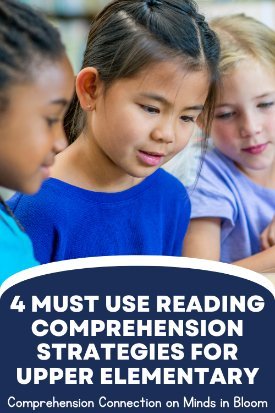
Hello from Comprehension Connection! My name is Carla, and I am honored to guest blog here on Minds in Bloom. From my blog name, you can tell that reading is my passion, and today, I will share with you a few of my favorite reading strategies for comprehension and printables you can use with your students for small group lessons.
With the shift in reading instruction toward the Science of Reading and explicit phonics instruction, many may find that comprehension has taken a backseat. However, we all know the importance of reading comprehension as it is the ultimate goal of reading. In order to build lifelong readers, it is essential that students are provided with real reading opportunities to enjoy literature, engage in book discussions, and opportunities to write about their interpretations, opinions, and more.
To help you come up with easy to use activities that foster deep thinking, I thought I’d share a few comprehension activities and printables that you can use with any book. Having resources readily available makes a huge difference in planning and leads to thoughtful discussion.
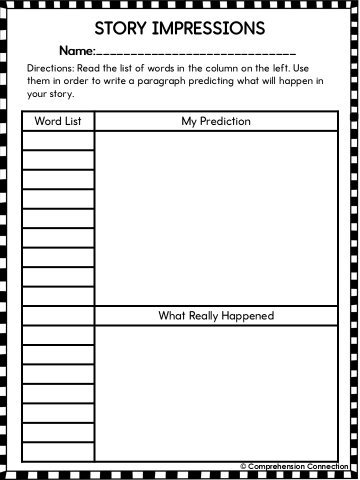
I recently explained on my blog how to do a story impression. This works well during the reading process with fictional books. Students stay actively involved throughout the strategy. They use their schema and vocabulary knowledge to make predictions. The strategy works for all skill levels. It hits the higher levels of Bloom’s Taxonomy, because students analyze the clues they’re given.
Another strategy I find effective for building schema for both reading and writing lessons are word splashes. Students can work individually, in pairs, or in small groups to brainstorm words related to the topic or text to be studied. Word Splashes work well with nonfiction topics and fictional themes before, during, and after reading as new vocabulary is acquired. The beauty of the word splash is that the word list developed can be utilized with post-reading writing assignments too.
Students can adjust word sizes to show their importance to the topic when using this strategy. The word splash above works well with fictional books like Frog and Toad Are Friends, science lessons on life cycles, or nonfiction about frogs and amphibians. Creating word splashes are flexible, meaningful, and fun.
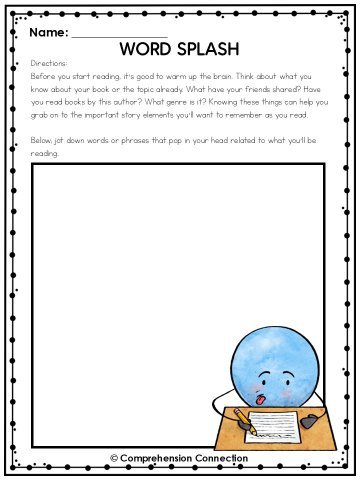
In addition to these two reading comprehension strategies, another favorite of mine is SQ3R. This one has been around a long time, but I am not sure how many teachers use it. The process follows the abbreviation, so students can quickly pick up on what to do.
The last instructional practice for reading comprehension I’d like to share is the active reading process. You may have heard the terms Stop and Jot or Close Reading? No matter what you call it, close reading has been found to be very effective for engagement, retention of information, and study skills.
The process I have used with my students is to have them box, underline, star, and label information as they read. If they are reading an article that can be written on, they use the margins to annotate their reading. This process is what students need to do to be able to add new information into their schema.
When I am teaching a reading skill, such as cause and effect relationships, I begin the process using a printable anchor chart (hard copy for students and projectable for my SMARTBoard). We mark what’s important on the chart, and then in small groups, students use sticky notes and our text marking strategies to engage with the text. Truly, this process is useful not only for reading groups. It’s important for lifelong learning. In fact, my own children use these reading strategies for comprehension in college!
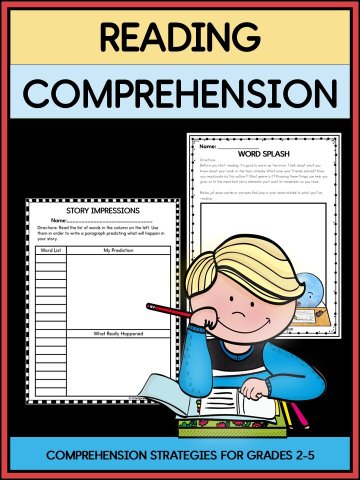
I believe that wraps things up. Thank you, Rachel, for allowing me the opportunity to share a few ideas with your readers. I have utilized your task cards for many different reading skills with my students. I appreciate your hard work and dedication to our profession and to the growth of our students. Your passion for learning is evident in the quality of your products.
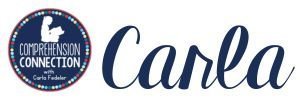

Carla is in her 26th year of teaching and is currently a reading specialist in Lynchburg, Virginia. Her website, Comprehension Connection, is dedicated to all aspects of the reading process and offers literacy tips and resources for grades K through 5. Carla loves sharing literacy tips and has been creating resources since 2010.
Learn about 5 Strategies to Teach Reading Comprehension for ESL Students!
Minds in Bloom

We built our reputation on quality. With a history of over 12 million downloads by more than a million teachers, you can trust Minds in Bloom to provide standards-based learning materials your students will love!
Quick Links